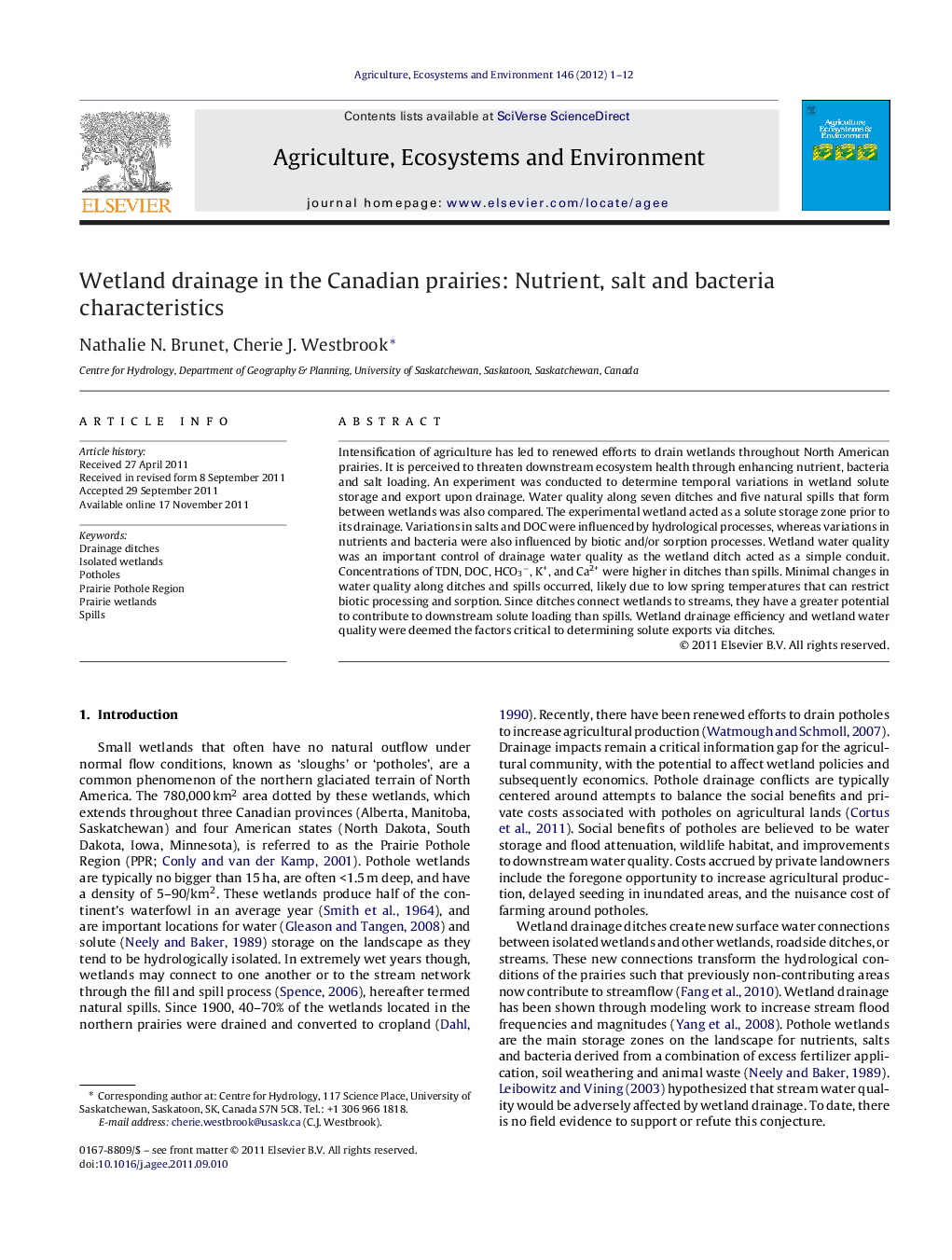| Article ID | Journal | Published Year | Pages | File Type |
|---|---|---|---|---|
| 2414697 | Agriculture, Ecosystems & Environment | 2012 | 12 Pages |
Intensification of agriculture has led to renewed efforts to drain wetlands throughout North American prairies. It is perceived to threaten downstream ecosystem health through enhancing nutrient, bacteria and salt loading. An experiment was conducted to determine temporal variations in wetland solute storage and export upon drainage. Water quality along seven ditches and five natural spills that form between wetlands was also compared. The experimental wetland acted as a solute storage zone prior to its drainage. Variations in salts and DOC were influenced by hydrological processes, whereas variations in nutrients and bacteria were also influenced by biotic and/or sorption processes. Wetland water quality was an important control of drainage water quality as the wetland ditch acted as a simple conduit. Concentrations of TDN, DOC, HCO3−, K+, and Ca2+ were higher in ditches than spills. Minimal changes in water quality along ditches and spills occurred, likely due to low spring temperatures that can restrict biotic processing and sorption. Since ditches connect wetlands to streams, they have a greater potential to contribute to downstream solute loading than spills. Wetland drainage efficiency and wetland water quality were deemed the factors critical to determining solute exports via ditches.
► Prairie pothole wetlands act as solute and bacteria sink; exchange solutes with uplands. ► Wetland ditches act as simple conduits and water quality is similar to natural spills. ► Wetland water quality and drainage efficiency are needed for accurate prediction of drainage exports.
